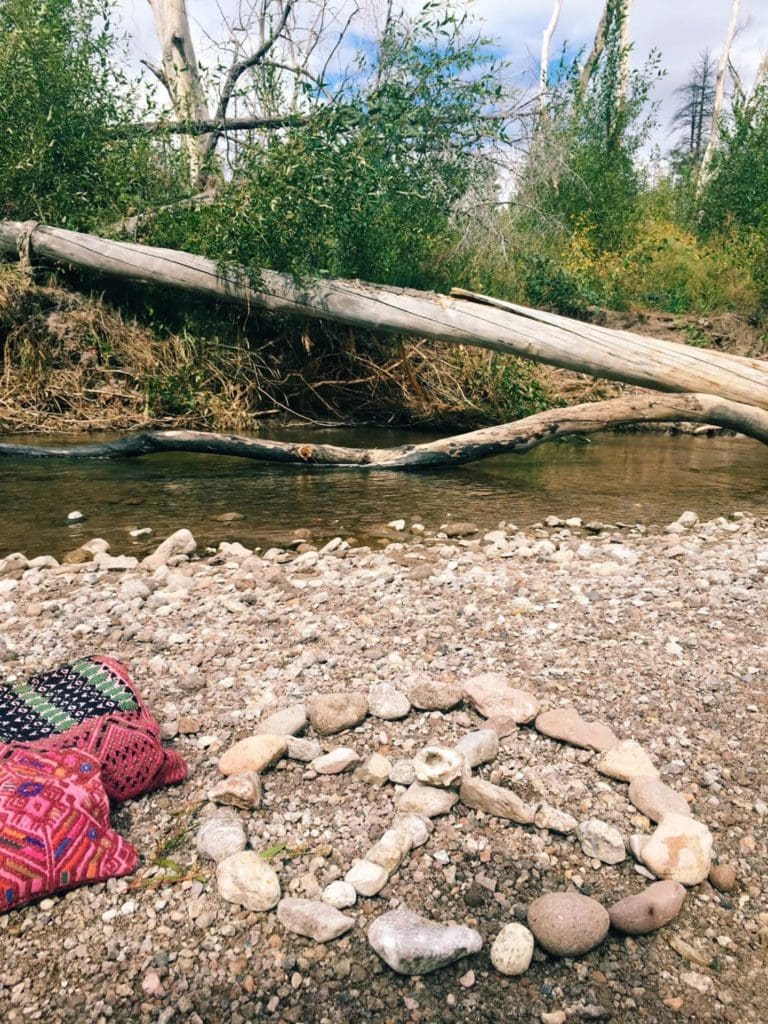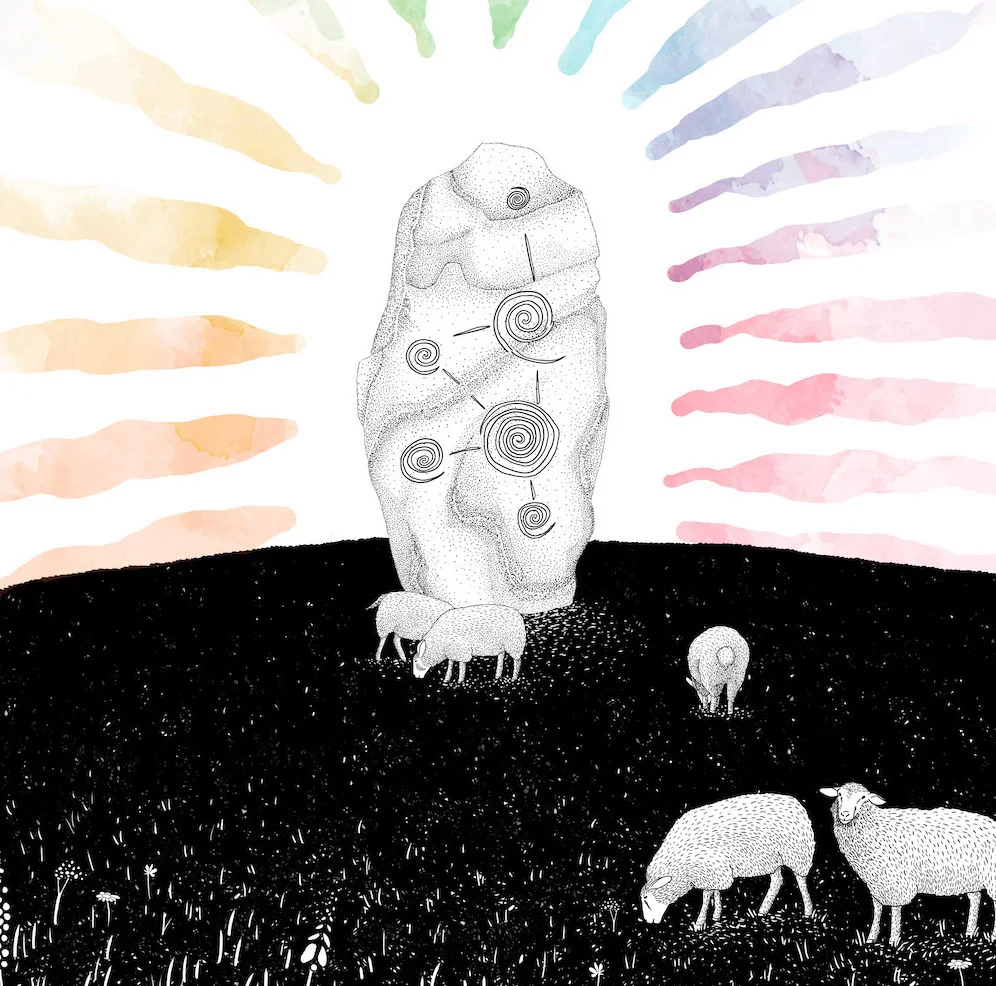Setting Boundaries to Change Your Reality

Recently I’ve started doing something highly unusual for me, something that is so alien it’s almost like speaking a foreign tongue.
Lately, I’ve been saying no— to just about everything.
No to teaching gigs and travel opportunities, no to friend dates and budding relationships, no even to a possible book deal (it simply wasn’t the kind of book I truly want to write).
Over the years I’ve learned how to say no to the things that my gut is loud about— but it’s been a lot harder to follow those quiet no’s. You know, the subtle ones. The ones that are just a shade more vivid than the yes’s. Those no’s that are like butterfly wings, unfolding for a moment to reveal what kind of color lies on the other side of this decisive moment, before disappearing again into the tiniest pen-line of possibility.
Often those subtle no’s are the hardest to say yes to.
As an empath and highly sensitive person (and newly retired “nice girl”), for most of my life I thought it was easier to just say yes to those small demands on my time and energy. The “opportunities” that came through looking shiny, but feeling distinctly hollow. The problem is that those small things have a tendency to add up.

Early summer is the time of the year when boundaries seem the hardest to hold—but the most needed. When the living world comes into its fullness the options for what we could be doing, who we could be seeing, how we could spend our time, seem endless.
Having too much on our plate is an unofficial American creed, so when we look around it seems natural to load ourselves up and expect not to rest until the cold months come again. For so long I actually thought it was natural to feel like my well was perpetually on the edge of empty. But this summer I’m just plain tired of being so parched.
So I started saying no to most things. And I began to reframe the whole act of saying no as a kind of adventure. Because what is life, really, but one long journey of unexpected undertakings? I’ve certainly tried the choose-your-own-adventure of saying yes to everything. So why not try the audacious escapade of saying no, thanks?
And what I found, when I began to set such boundaries, was utterly unexpected.
I knew I’d have more free time, I knew I’d be less stressed and more nourished— what I didn’t expect was for my entire perception of, and participation in, reality to change.
Turns out setting boundaries can be kind of psychedelic.

The more I make “no” my power word, and follow the flow state of my subtlest desires, the more I experience an entirely different version of reality. When I create space by saying no, my entire internal clock shifts. The days seem slower, more luxurious. I am less worried about where I’m going and more apt to buy an ice cream, sit by the river, and just enjoy. Colors are more vivid. I find myself stopping to admire a flower, wondering how I never noticed the technicolor joy of it all before. The constant quiet stream of self-doubt ebbs and I am surprised by the springs of self-contentment and peace that bubble to the surface. I am quicker to laugh and to forgive myself for faux pas. Life seems infinitely brighter, more charming and full of humor.
All of the shifts I am always wanting to make— to slow down, to enjoy the moment and my own self more, to let go of my future tripping, and relish the flow of time as it moves past me, all come into focus. And it is as easy (and difficult) as saying no.
I had no idea that setting boundaries could feel like this. That by following the most subtle of no’s that flutter inside your bones, you can create containers of self in which you can truly feel your own life force, inspiration, and desire. That your connection to the stream of life will deepen exponentially for you having drawn that line. And that by doing so, you will begin to change your experience of being alive.

This past winter I moved into a new house, inheriting a garden that had once been stunning but after five years of soft neglect, had become overgrown. It is lovely in its wildness, but I knew, if I wanted to restore the kind of diverse beauty this place once held…. I was going to have to do some serious pruning. It occurred to me one day, as I was shoulder deep in the hedge pulling out vigorous shoots of Japanese knotweed, that this too is another example of the life-giving properties of boundary setting.
Our lives are gardens that we cultivate, and learning how to set proper boundaries is part of what makes the blossoming possible.
When I set boundaries in the garden through pruning, thinning, and weeding, I create space for more flowers and fruit. I give the delicate plants room to flourish, a chance to bloom. I invite in more diversity and, often, more literal growth. As any gardener knows, gardens are literally made by setting (and maintaining) boundaries, otherwise they would cease to be.
Just like deciding what plants to weed out in the garden, there is no “right” and “wrong” when it comes to setting boundaries for yourself— I am learning this as I make decision after decision in the literal and metaphorical garden of my life. There is only the question of what you truly desire to cultivate. A weed is just a plant that is claiming energy in a space where you prefer to grow other things. The same is true for relationships, projects, and appointments that are taking up the space that would otherwise be fertile incubators for the flowers of your own life force.

As we move into the rich syrup of summer, ask yourself: What kind of flowers do you truly wish to cultivate this season?
And where do you need to set a boundary— what opportunities do you need to say “no” to— so you can create that space for yourself to grow?
As we celebrate the longest days of the year, it is a potent time to set boundaries and have them be infused with the indelible power of our sun.
. . .
Check out this post about my favorite solar power boundary setter, or keep reading here for an introduction to my top three essences for creating strong boundaries, along with a guide to using them on different acupuncture points.



Thank you for your continuous authenticity. I am learning to be strong in my own discernment & guilt-free of saying no, even to things that sound so very nourishing. I feel very supported by this post so thank you 💗
Thank you for your brave comment here Georgia. Saying No and setting boundaries is a process (I’m reminded of this every time I go out to weed my garden and realize it’s a season-long adventure). Hang in there. We are truly in this together.